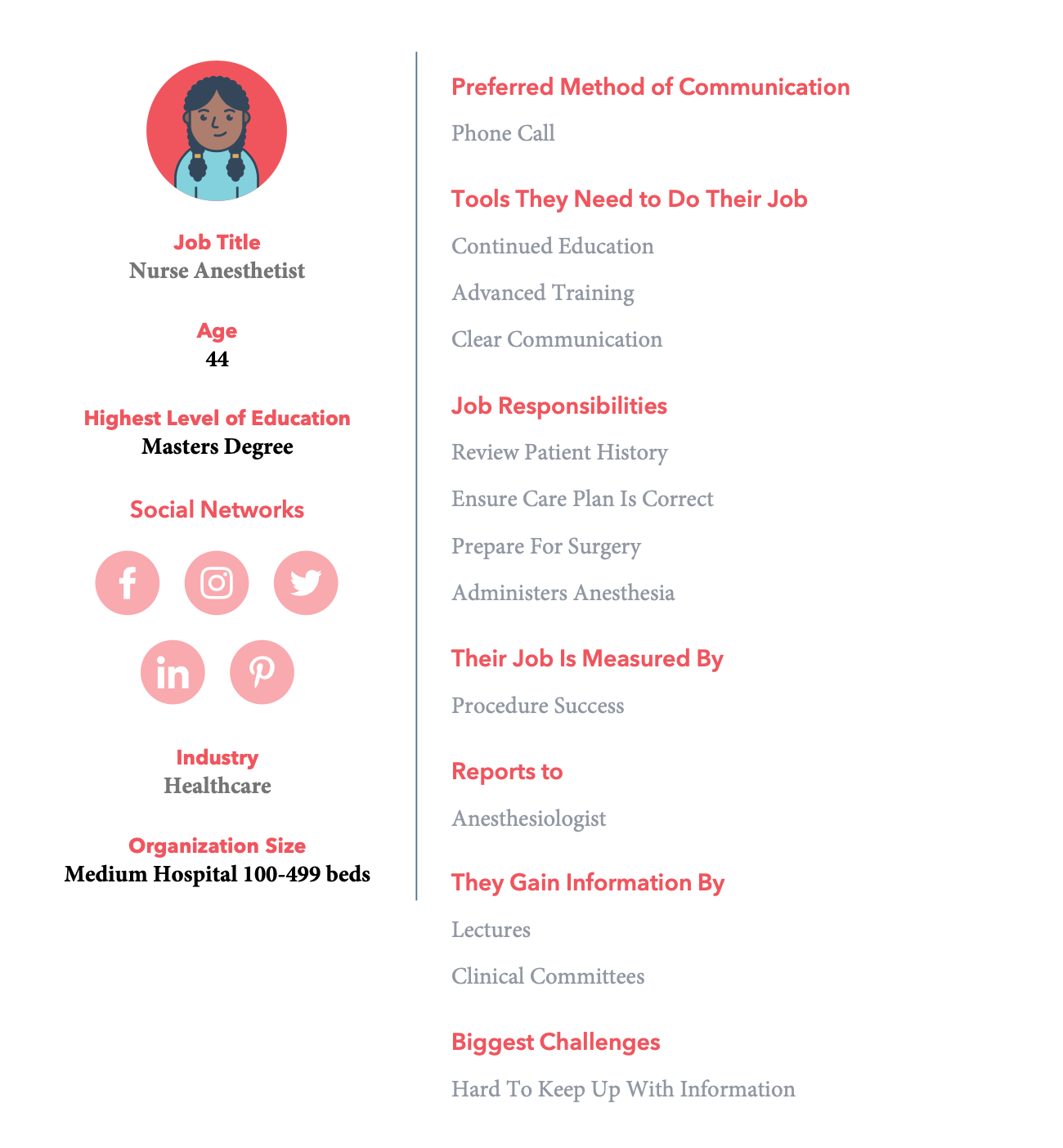You can’t market healthcare the same way you market Oreo’s.
Healthcare is a unique field. On the one hand, everything is consumer and patient driven. That’s probably why 89% of patients will perform a Google search for their symptoms before even thinking about contacting their provider.
On the other hand, medical care is often compulsory–or, at least, strongly recommended. At some point in your life, you or a loved one is going to need healthcare. So it’s consumer driven and–often–non-optional. As a result, healthcare marketing can pose a significant challenge.
That’s why we’ve developed a list of proven healthcare marketing tactics that work. These strategies are designed to help you set the right tone, generate leads, and turn those leads into new patients.
Your Time is Limited, So What Should You Focus On?
Whether you’re running a medium-sized clinic or a large hospital system, your time is going to be limited and stretched thin. Marketing is an essential task, but it may not always feel like an immediate need (there are just so many fires to put out on any given day). So the question becomes: what should you focus on? What really works?
Having worked with healthcare organizations of varying sizes and complexity, the PatientX marketing team has developed a list of the essential healthcare marketing tactics. This list is honed by experience and thoughtfulness.
Consider focusing on the following.
Developing Personas
A persona is an example of your typical customer or patient. Often, these examples are given names–for example, “Sue” might be your typical patient. A persona will provide lots of information about Sue–including her annual income, what kind of car she drives, maybe even what she does for fun.
- A persona can guide you towards your true target market. You’ll better understand who your patients are and how to communicate with them.
- Likewise, developing personas can help you determine if your target audience is really who you think it is, confirming or challenging your assumptions.
- Once you know your audience, you can design your website and online presence to work better for that group of potential patients. For example, if Sue is over 50 years old and doesn’t have strong computer skills, you can consider simplifying your website and focus on ease-of-use, improving lead conversions in the process.
- Developing personas can lead to improvements in lead generation, marketing ROI, and conversions.
- Your website and branding will more directly appeal to your target audience.

How Do I Get Started?
There are two ways to begin developing marketing personas (they are not mutually exclusive):
- First, think hard about who your desired target market really is. Who are the patients you see everyday? Who are the patients you never see? Use this information to develop a series of marketing personas.
- You can look at the demographics of your patients, social media followers, and website users. (These demographics may be available through analytics tools and your own records.) Use this demographic information to create, enhance, and test your personas.
Content Marketing
Users are hungry for content–they want answers to all of their questions. That’s why Google likely receives over 1 billion medical questions per day! So… what questions do they have? Turn to your user personas to answer that! By knowing who your patients are and what they care about, you can anticipate what questions they’re asking–and be there to provide the answers.
- Content marketing can improve your overall authority and trustworthiness–but only if you create high quality content that matters to patients. Let’s say your clinic is a top rated spinal surgery center. That’s great! But it’s not enough. Your content should explain how your approach delivers care that’s more effective, safer, and less uncomfortable. Your content should always be relevant to the patient.
- When you have great content on your website, search engines will often prioritize your results in organic searches. This can lead to more leads and conversions over the long run.
- High-quality, trustworthy content is shared more often on social media. This broadens your authority, your brand recognition, and your appeal–exposing your healthcare organization to even more leads.
- Modern patients are online-first users. Over 89% of patients will Google their symptoms before they call a doctor. They search online for reviews, to answer questions, and more–with content marketing, you can position your brand to become a valuable resource and attract these patients.
- High quality content marketing results in more quality traffic to your website. With more quality visits, your website sends a clear message to search engines: I have quality information and deserve to be higher in the rankings.
- As your brand becomes more visible, you’ll attract more leads to your website. These leads can be placed into various funnels, depending on why they visit you in the first place.
How Do I Get Started?
- Evaluate your online messaging. Are you talking about how great you are? Or are you talking about how the patient got their life back? Remember that the goal of your content strategy is usually to provide what the patient is looking for–answers, reassurance, and benefits.
- A good content marketing strategy starts with, well, creating great content. Patients have a million healthcare questions. Your content should answer those questions in a way that’s useful and understandable. You can answer these questions via blog posts, procedure pages, and more.
- Once you have created your content, make sure to share it on social media. This can sometimes feel trivial, but every share helps your high quality content become more visible.
- A good SEO strategy can help ensure your content ranks well and maintains organic visibility, again making your content more visible to leads and patients with questions.
Website Marketing
Your website is where you’ll usually make your first impression. As a result, the importance of your website goes well beyond a pretty image and a fancy logo. Your website has to work–and it must be easy to use.
- A mobile friendly website means that more users can access your information and get to know your brand. Almost 60% of all searches are performed on mobile devices, and so it’s not surprising that many people do healthcare searches on their phone first–and a mobile friendly website makes you a valuable, easy-to-read resource.
- An improved user experience means more patients successfully move through your lead generation cycle. They can easily find buttons and CTAs and make appointments, and you end up with more patients.
- An accessible website can protect you legally and increase the number of patients coming to your website–a win-win!
- Website marketing that’s tailored to your user needs can increase your marketing ROI and bring more patients through your door. For example, once you know who your patients are, you can tailor content around the terms they search for written in a way that’s easy to understand. This will lead to more patients clicking on your site–and booking with your clinic.
- A website that works well for your users can also be used as a patient portal–making it easier for patients to find easy access to pay bills and schedule appointments but also to find resources and tools that support their health journey.
- A website that loads quickly and works well for users can keep your patients on the website longer–a key factor that helps Google rank websites. This means your overall visibility will also improve.
How Do I Get Started?
- You can begin by performing a website audit. Look at your analytics details–your bounce rate, your pages per views, even user feedback. Determine what areas of your website work well and which ones aren’t up to the task.
- Make sure your website is directional: it should tell patients where to go and what to do. Good websites will be helpful to patients and move them into the next step of the lead nurturing cycle.
- Work with a marketing agency to redesign your website so it’s tailored to your user personas.
Reputation Management
Most people check online reviews before they eat out. You can bet they do the same thing before they undergo any kind of medical procedure or select a doctor. This makes reputation management–the process of ensuring your company generates solid reviews–is critical to any successful marketing campaign.
- A reputation management strategy can help ensure that unhappy patients aren’t the only ones leaving reviews. As a result, your reviews will be more accurate.
- Because you’re generating a significant number of reviews, no single negative review will undermine your business. For most clinics, negative reviews are balanced out by a larger number of positive reviews.
- Reviews have an impact on search engine rankings. If you have great reviews, you may also appear to more users searching for your service.
How Do I Get Started?
- Ensure that all of your review profiles are filled out and updated. (For example, make sure your profile on Google Business, Yelp, and Healthgrades–among others–are filled out and active.)
- Institute internal processes that ask patients for reviews. These systems can be automated to make the whole process easier and less time consuming.
Find a Partner that knows Healthcare Marketing
These proven healthcare marketing tactics will help you establish your marketing presence. But they can still take time, energy, and expertise to establish properly. It often makes sense to work with a partner who can guide you through the process, so you can avoid common errors and start seeing a higher ROI faster.
Contact PatientX today to find your healthcare marketing partner!
POSTED ON:
November 14, 2022
By
Kimberly Winkleman |
Marketing
Tags:
About the Author:
As the COO of PatientX, Kimberly wears many hats. She’s a delegator, a doer, a cheerleader, and a cracker of whips, but what sets her apart is her achieving, go-getter spirit. Kimberly is heavily involved in nearly every project PatientX undertakes, and she wouldn’t have it any other way. As a proud maximizer, she relishes the daily opportunity to help her team members and clients perform at their highest level. Throughout her sixteen-year career, Kimberly has served as an Executive Director for two non-profits while also running two campaigns in South Dakota, and she has experience in all facets of public relations, marketing, executive management, leadership development, public speaking, and event planning. Her love of people and helping others succeed is apparent in her work at PatientX and throughout her life and career.
